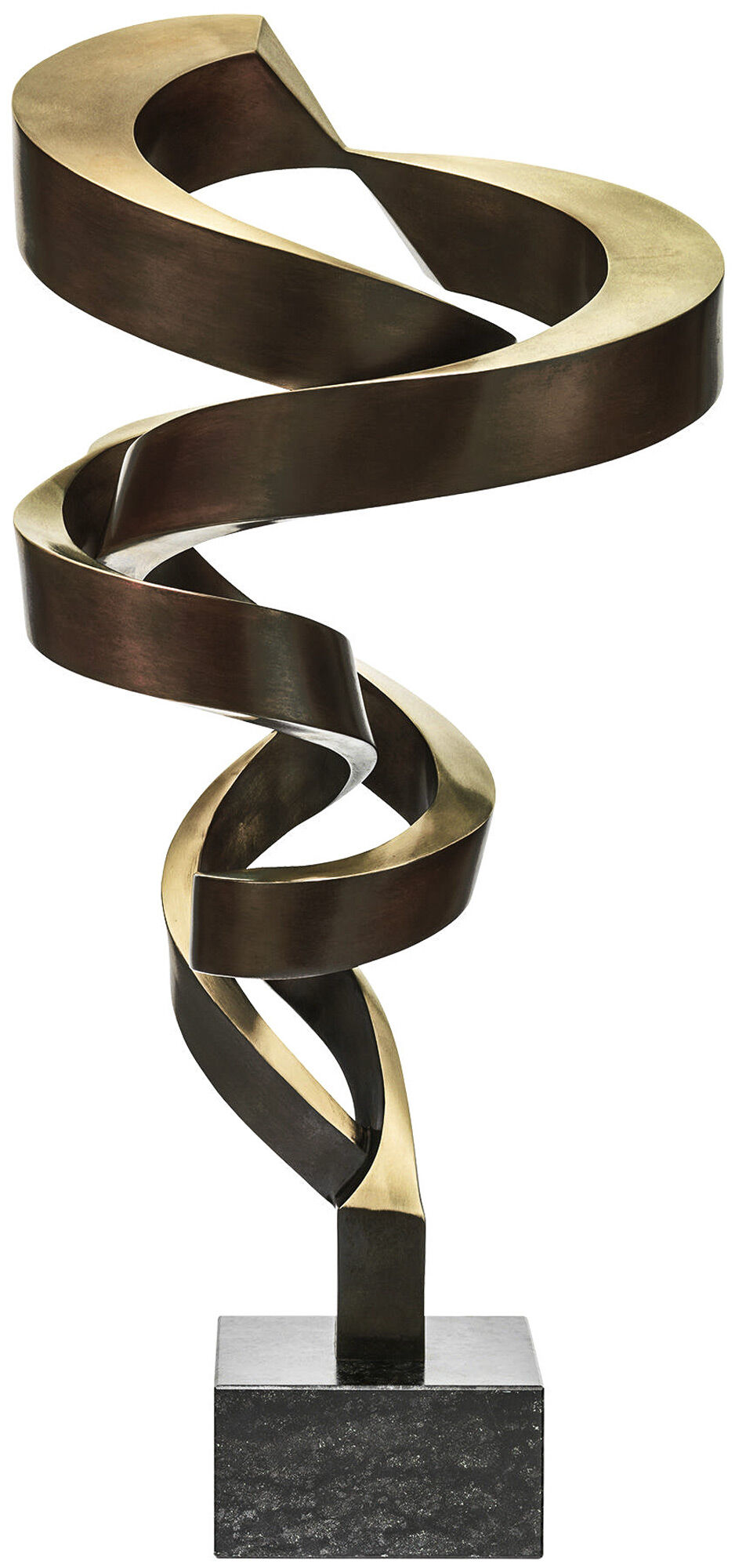Sculpture "Circular - Circling" (2004), bronze
Sculpture "Circular - Circling" (2004), bronze
Quick info
limited, 9 copies | numbered | signed | bronze + stone | patinated | sculpture: 62 x 28 x 24 cm (h/w/d) | pedestal: 13 x 13 x 7 cm (h/w/d) | weight 14 kg
Detailed description
Sculpture "Circular - Circling" (2004), bronze
Sculpture made of fine bronze, patinated in two colours. Cast by hand using the Lost-Wax-Process. Limited edition of 9 copies, numbered and signed. Size 62 x 28 x 24 cm (h/w/d). Pedestal made of diabase, size 13 x 13 x 7 cm (h x w x d). Weight 14 kg.
About Volkmar Haase
1930-2012
His several metre-high steel sculptures made the German sculptor Volkmar Haase world-famous. More than 60 of his works can be found in public places in German metropolises. Major museums such as the Museum of Modern Art in New York City or the Lehmbruck Museum Duisburg also exhibit his works.
The trademark of the "steel-wire walker" is the playful arrangement of strict, geometric forms with round, soft lines, which gives the works an unexpected lightness. According to Haase, many of his sculptures stand on just one point, the "zero points", from which they "start and unfold upwards and swing into space".
An alloy of copper with other metals (especially with tin) used since ancient times.
When casting bronze, the artist usually applies the lost-wax technique which is dating back more than 5000 years. It's the best, but also the most complex method of producing sculptures.
First, the artist forms a model of his sculpture. It is embedded in a liquid silicone rubber mass. Once the material has solidified, the model is cut out. The liquid wax is poured into the negative mould. After cooling down, the wax cast is removed from the mould, provided with sprues and dipped into ceramic mass. The ceramic mass is hardened in a kiln, whereby the wax flows out (lost mould).
Now we finally have the negative form, into which the 1400° C hot molten bronze is poured. After the bronze had cooled down, the ceramic shell is broken off and the sculpture is revealed.
Now the sprues are removed, the surfaces are polished, patinated and numbered by the artist himself or, to his specifications, by a specialist. Thus, each casting becomes an original work.
For lower-quality bronze castings, the sand casting method is often used which, however, does not achieve the results of a more complex lost-wax technique in terms of surface characteristics and quality.
Term for an art object (sculpture, installation), which is produced in multiple copies in a limited and numbered edition according to the artist‘s will.
Artist's multiples have been called the most accessible and affordable art on the market.
A plastic work of sculptural art made of wood, stone, ivory, bronze or other metals.
While sculptures from wood, ivory or stone are made directly from the block of material, in bronze casting a working model is prepared at first. Usually, it is made of clay or other easily mouldable materials.
The prime time of sculpture after the Greek and Roman antiquity was the Renaissance. Impressionism gave a new impulse to the sculptural arts. Contemporary artists such as Jorg Immendorf, Andora, and Markus Lupertz also enriched sculptures with outstanding works.


